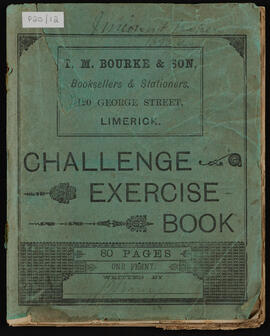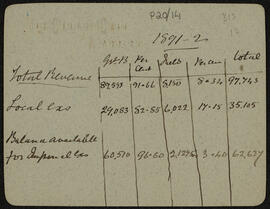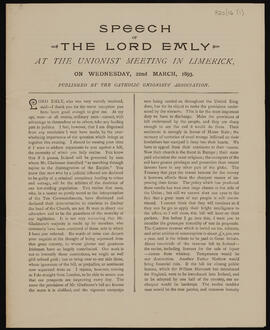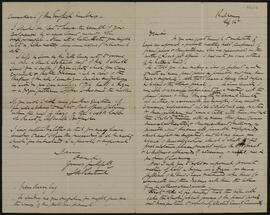Identity area
Reference code
Title
Date(s)
- 1893 (Creation)
Level of description
Extent and medium
2 files and 5 items
Context area
Name of creator
Biographical history
The Sandville branch of the Barry family is descended from David Barry, who received a grant of land in county Limerick having saved the life of an Englishman during the 1641-42 war. Originally called Fryarstown, the name of the estate had been changed to Sandville by the time of the marriage of John Barry in 1804 to Mary O’Shaughnessy. Their eldest son, James, established himself at Bellevue, Croom, county Limerick, while the Sandville property passed to the third son, John. Following the latter’s death without issue in 1860, both properties passed to James Grene Barry (1841-1929), James’s eldest son.
The Leamlara branch of the family is often referred to as Standish Barry to distinguish it from the other Barry families in the area. The Leamlara estate near Carrigtwohill, county Cork, was granted to the Barrys at the time of the Anglo-Norman invasion. A castle built on the property in the fourteenth century was utilised in the mid eighteenth century for the construction of Leamlara House. It remained the family seat until the death of Henry Standish Barry in 1945, when his two surviving daughters sold the property to the Irish Land Commission. Leamlara was the birthplace of Garrett Standish Barry, the first Catholic Member of the Parliament to be elected after the 1829 Emancipation Act.
Archival history
Immediate source of acquisition or transfer
Content and structure area
Scope and content
This series contains documents relating to James Grene Barry’s objection to Gladstone’s Home Rule Bill of 1893.
Appraisal, destruction and scheduling
Accruals
System of arrangement
The documents have been arranged chronologically by date.
Conditions of access and use area
Conditions governing access
Conditions governing reproduction
Language of material
- English






